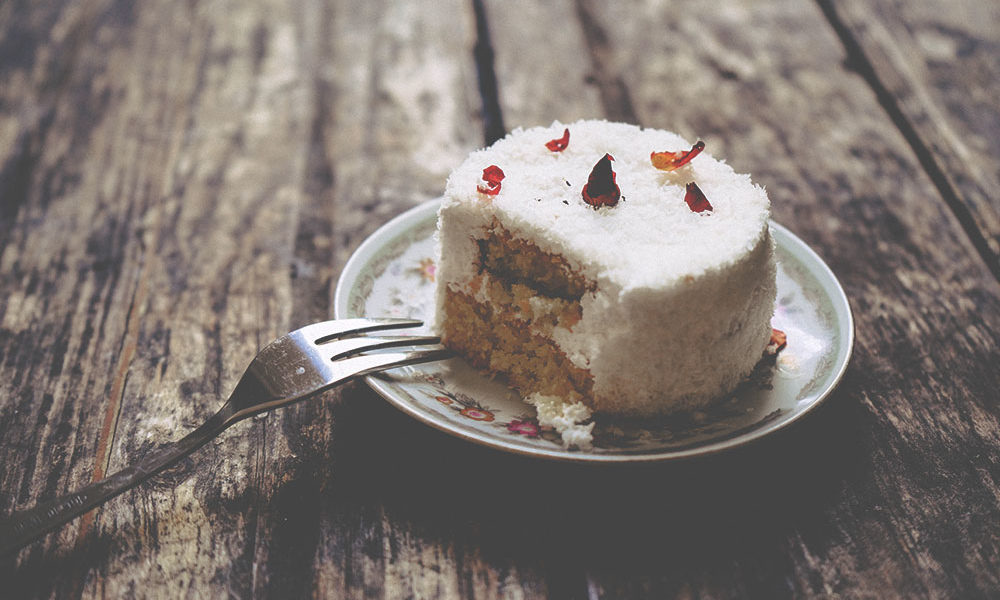What would happen if you gave yourself the permission to eat the foods you enjoy? Let’s explore what giving yourself back the power of choice can do for you.
BY: VINCCI TSUI, RD
If you’ve been introduced to intuitive eating, you will know (or learn if you haven’t yet) that one of the principles introduces the idea of “unconditional permission to eat all foods”.
You may be wondering, can I really do that?
After all, unconditional permission to eat can feel like a roller coaster—the idea of being able to eat as much as you want, of anything you want, can sound fun and thrilling, especially if you’ve been avoiding some foods for a long time. But it can also be scary as it can feel like a loss of control, or that you’re not taking care of your health. Before you go down that rabbit hole, know this:
How unconditional permission “works” is through the idea of habituation.
Yes, in the beginning you might find yourself eating all the foods in sight, but eventually the food loses its emotional charge. It’s similar to the first time someone says “I love you” to a romantic partner – there was probably a lot of buildup in terms of finding the “right time” to say it, anticipating a deep emotional connection as the short phrase somehow moves the relationship to the “next level”.
Over time, however, “I love you” becomes just something you say. That’s not to say that it has no meaning, but there isn’t that same buildup and anticipation as the first time. Food can be the same way.
Habituation gives you the power of choice.
You might be thinking, wouldn’t it be easier to just say that you can’t have something? Why bother making peace or giving yourself unconditional permission for something that you’re not going to do anyway?
Unconditional permission gives you the power of choice. Instead of saying, “I can’t have X,” it becomes, “I’m choosing not to eat X because I don’t feel well after eating it.” Or, “I’m choosing not to eat X because I know it makes my blood sugars harder to manage.” Or even, “I know I usually feel bloated after eating X, but I choose to enjoy some right now and I know the bloated feeling will pass.”
In addition to taking the power away from food, giving yourself the power of choice also helps to build body acceptance and trust. Diet culture has conditioned us to turn to meal plans, diet guidelines, lists of foods to choose or avoid, and so-called experts to tell us what and how to eat. Taking back some of that power is essentially saying, “I trust myself and my body to tell me what, how much, and when to eat.”
That leads into the importance of exploring the intention behind your choices.
It’s not always necessary to get rid of all rules, as structure can be helpful for some. But if your food rules are coming from a place of fear or a need for control, then perhaps there is room to experiment with loosening your hold a bit. Ask yourself:
- Where is this rule coming from?
- Does this rule come from an external source, or is it one that you have made, based on your own observation of your symptoms, health status, lifestyle, etc.?
- Does this rule come from a place of control or compassion?
- Is this rule absolutely necessary? With the exception of very few medical conditions that require complete abstinence from a food, it’s often not a necessity. Is this one of the rare cases where you need to stop eating something entirely, or is there some wiggle room?
- What does having this rule in your life mean to you?
- What would letting go of the rule make possible?
Note that these questions are simply prompts to help you create space and tune in to ask yourself what you really need. There are, however, situations where the impact of certain foods is clear cut, such as celiac disease or food allergies.
But there are also many other conditions where the impact of food is less clear and consistent.
For example, some people struggling with chronic pain or GI concerns might find certain foods trigger their symptoms, but each individual has different triggers. Sugars and carbohydrate-rich foods can increase blood sugar in someone with diabetes, but this relationship is also impacted by different factors like severity of disease, medications, stress levels, other foods in the person’s diet, physical activity levels, and so forth. Even in something seemingly obvious like lactose intolerance, different people are able to tolerate different amounts of lactose-containing foods. In fact, some are even able to build some tolerance over time by having a bit of lactose every day.
In short, in most cases, all foods can fit. It’s a matter of finding what works for you, while giving yourself unconditional permission to eat. Just remember that having permission to do something doesn’t mean you have to do it or engage with it.
It just means you have a choice.
Adapted from the original article.
HEADER IMAGE: CHINH LE DUC
Vincci Tsui, RD is a former bariatric dietitian turned certified Intuitive Eating counselor and Health At Every Size(r) advocate. Based in Calgary, Canada, Vincci specializes in helping people untangle their messy relationships with food and their body, and works with individuals in-person and virtually through her private practice. Read more from Vincci at www.vinccitsui.com.

